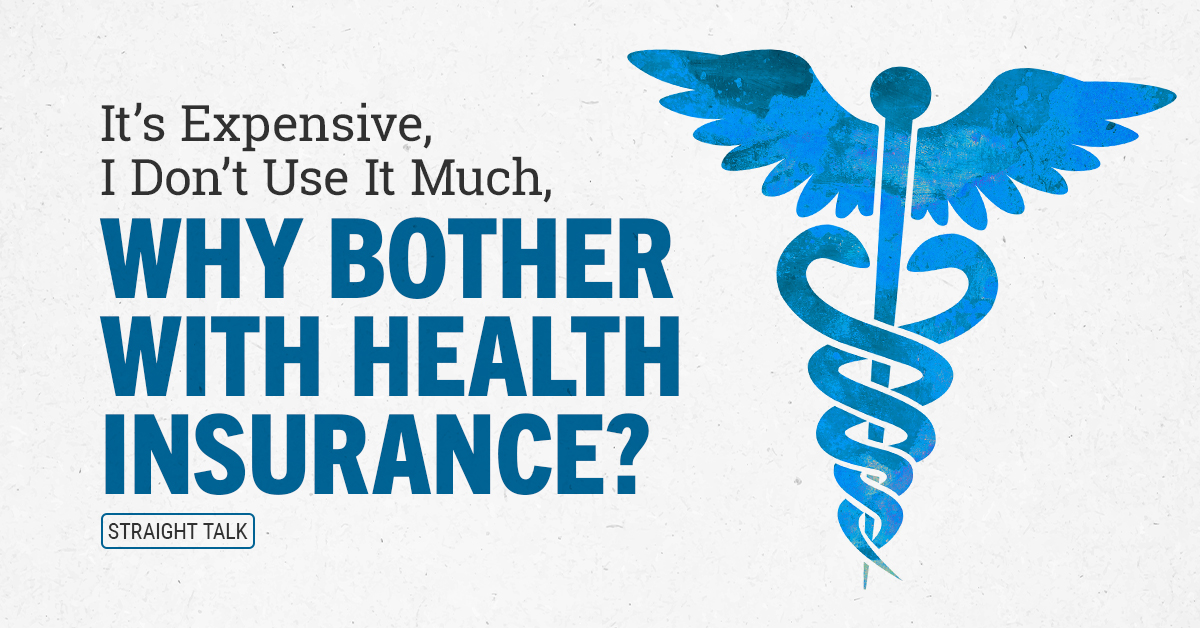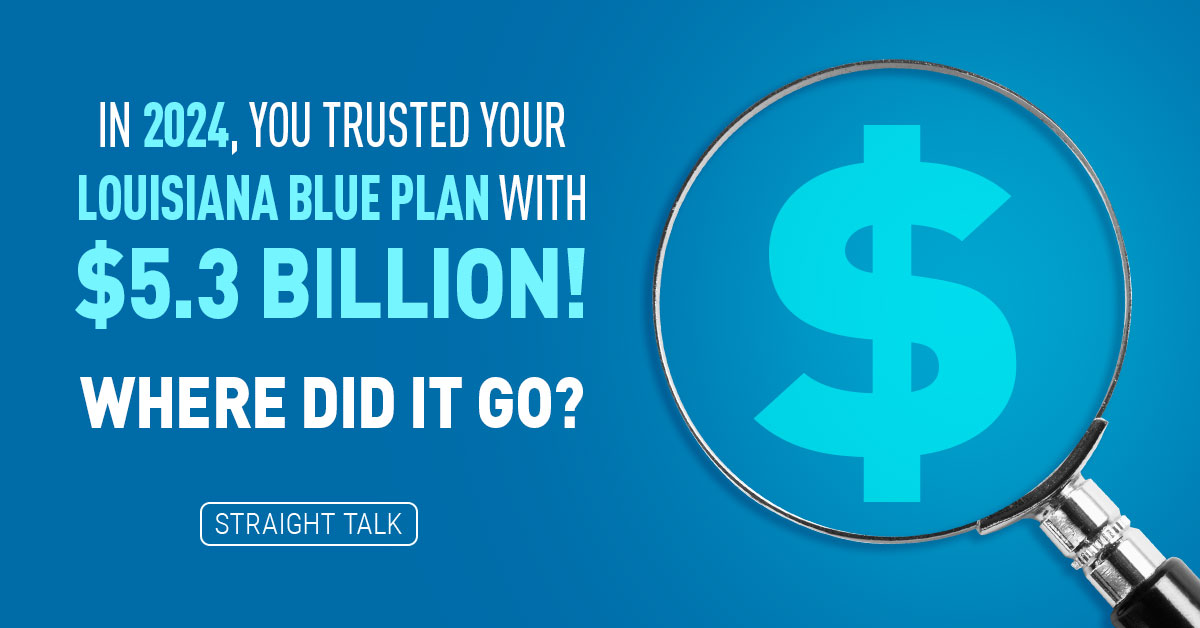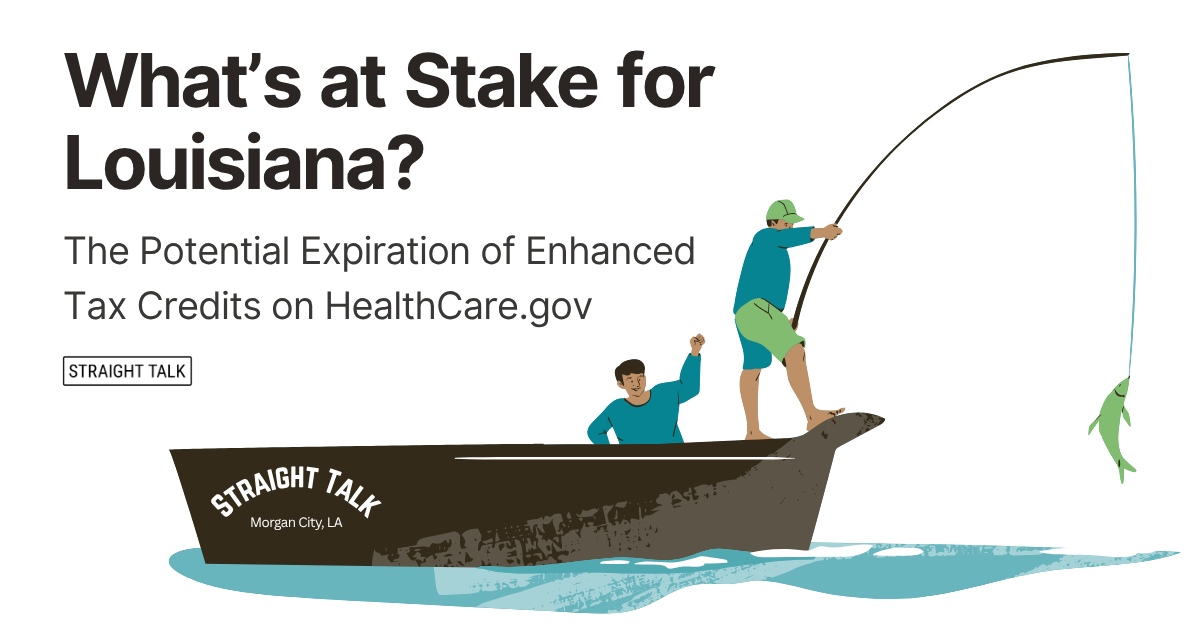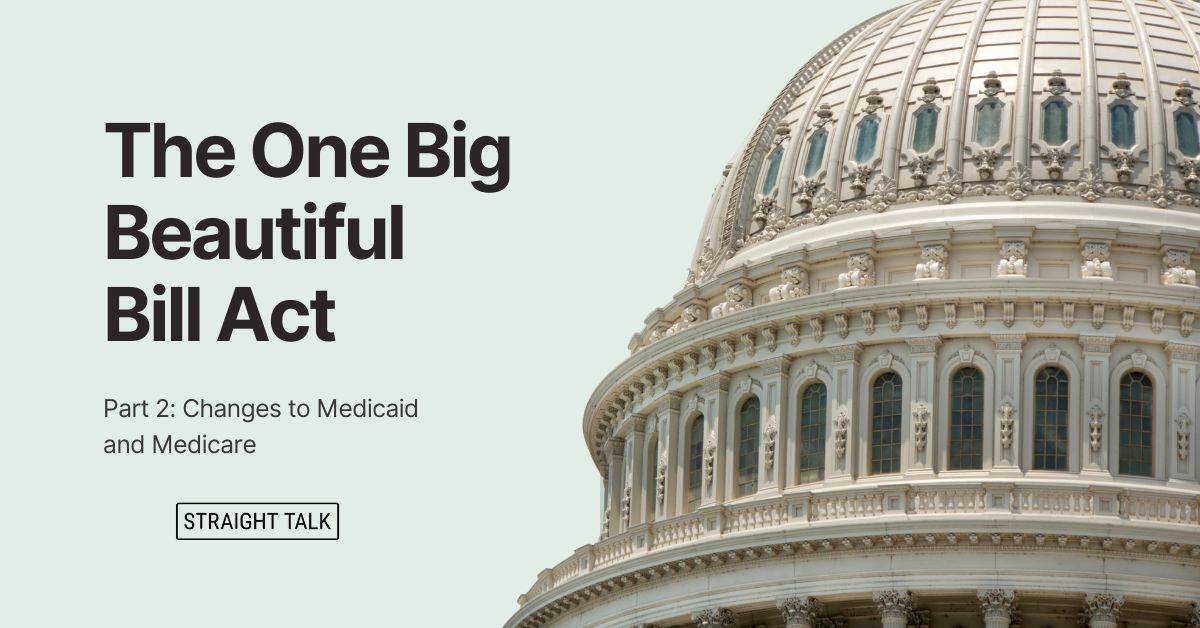It’s Expensive, I Don’t Use It Much
As we were developing our recent Straight Talk posts that dealt directly with terminology, how health insurance pays for your health care, and how your out-of-pocket spending and your health insurance carrier’s spending relate to your premiums, another question kept coming up. This one came specifically from younger folks with health insurance. It went something like this:
“I spend more and more every year for my health insurance premiums, and then when I go to use it, I still have to pay lots of money; why am I even bothering?”
This is an excellent observation, especially when you consider the folks who diligently pay for their health insurance month after month during periods when they are perfectly healthy and don’t actually use it much. It led me to think about real costs, perceptions of costs, and how health insurance is perceived relative to everything else that a person would purchase. And this week, I’m sharing those thoughts with you.
A Snowball Looks Like an Avalanche When It Hits Your Face
A person’s premium, whether they are young or old, is actually a small amount of money when compared to what health care ACTUALLY costs. It’s hard to see it like that because health care pricing is not very transparent and varies quite a bit between providers. But it can add up to lots of money very quickly – budget-busting, drive-you-into-bankruptcy and ruin-your-life amounts of money. As a cancer survivor and someone who’s had quite a bit of reconstructive surgery over the years, I’ve seen some of those types of bills, and every time I thanked God I had good health insurance.
So, that’s the rub; we don’t really do a very good job communicating to people how much health care actually costs. In a nutshell, you can think of health care pricing like this:
Billed Charges and Discounts
Health care payments start with the “billed charges” that health care providers keep on file for every service. This is the top-end, “official” price for your health care. When insurance companies contract with a provider to bring them into the network, you, the member, usually get a discount off these “billed charges” when you go to them for care. So even when you are still in your “deductible zone,” you are getting a discount on your care if you have health insurance.
Government-managed plans, like Medicare and Medicaid, pay different amounts that are not negotiated, but set by government agency regulation. Their amounts are very different prices than you or I pay with private health insurance.
All these payment amounts, coupled with the almost 70,000 billing codes medical providers use, makes figuring out how much a health care service costs up front almost impossible. So medical care can cost a lot, and nobody really knows that number even after they’ve used it. Is it hard, for example, to run up a six-figure hospital bill as an inpatient? No, it is not, depending on why you are in the hospital. Are a lot of our membership using $50,000 or more in prescription drugs every year? More than I ever imagined. And your health insurer has to have the money available to pay for all these things up front.
Age Rating
Further muddying the water on what care costs are government mandates on sharing risk, which require premiums to NOT be based on your behavior, health status, how well you eat or take care of yourself. It is illegal for a health insurance company to give you a better rate because you are a less of a risk EXCEPT by pricing strictly by age. Premiums are set based almost entirely on your age by federal law. These age-rated premiums use a federal formula that charges non-child-bearing younger folks too much, and child-bearing or older folks not enough. The flaw in this pricing is easiest to see when you look at age rating, where 60-year-olds, likely at the peak of their earning power, only contribute three times in premiums what a 21-year-old contributes, while actually absorbing more than four times as much health care.
Wealth and Lifestyle Defense
In addition to these structural problems in communicating to folks exactly just how much protection health insurance really gives you, we humans have a tendency to compare how much something costs to OTHER things we purchase. Every month, we spend money on car notes, rent, food, mortgages, phone bills, tuition and the like. All of this spending gives us an instant, immediate gratification, if you will, for that spending because we can then use and consume vehicles, shelter, food, phone/data usages and education. Immediate gratification is a powerful motivator to keep spending and be satisfied with that spending.
Unless you are already sick, health insurance does not usually provide immediate gratification like the other spending we mentioned. And being sick or needing to go to the hospital isn’t all that satisfying even if you do get to see your insurance being used. But that coverage can provide services for you that KEEP you healthy, if you use them.
At its core, health insurance is wealth and lifestyle defense. When you purchase it, you are simply transferring the risk of some future, unknown, potentially financially devastating event AWAY FROM yourself (and your bank account) by paying another entity to take on that risk now — even though the event may be far down the road.
Unlike the other major risk-transfers people engage in (like buying car insurance or homeowners insurance), there is no legal mandate to own health insurance. And there usually isn’t some immediate threat that we can see being mitigated by having it when we are young, until we develop some sort of chronic health condition or have an adverse health event or get in an accident. Until and unless that happens, it FEELS like spending money for no immediate return.
It doesn’t help the mindset that millions of people are getting similar wealth defense without spending nearly as much money up front (with Medicaid and Medicare). But ask anyone who’s had a surgery, been in a car accident, had children or gotten a serious diagnosis, and they’ll tell you it was worth the money up front to owe only a small portion of the total cost. And odds are, all of us are going to have at least one very expensive health care need in our lives. It’s best to be prepared when that need arises.
For example, our pool of almost 700,000 fully insured members bought over $900 million in prescription drugs during 2021. Of that $900 million, we (Blue Cross) paid 87% of the total cost of those drugs; our members’ cost was only 13%! That is still a lot of money when you are the one working for it; but you can rest assured, the drugs people consumed cost MUCH more than they know. And folks who don’t know the real price of their medicines have a hard time appreciating the value of their insurance.
Recently, I saw an ad for a medication designed to help patients with psoriasis. The ad indicated that the drug company would help patients pay for their medicines, perhaps down to as low as $0 a month depending on their insurance.
What they DIDN’T show in the ad, was that most of the real price of the medication (over $7,000 per month) has to be covered by health insurance, minus what the individual is charged. Health insurance still pays thousands of dollars a month to help control (not cure, by the way) their psoriasis. Communicating that to an insured person to help them appreciate the power of their health insurance is something we could do more effectively.
Risk and Cost Sharing
Other types of insurance you purchase, like car insurance, are much-less-regulated types of insurance and can assign relative risk in the form of higher premiums. So bad drivers with a history of wrecks pay more for the same coverage. Factors that may be indicators of a tendency toward bad driving (age, credit status, education level, etc.) can be built into rates legally in most states.
In health insurance, such accurate assignment of risk is illegal. Thus, those who are healthier and use less health care on average at almost all ages pay the same rates at the same age as people who are much worse health care risks. Childbearing also reflects this trend, as those of childbearing age require lower premiums based on their consumption of health care (due to age-only rating) than do the non-bearers of the same age. (By the way, this isn’t complaining; I’ve been one of those using more insurance than average for years.)
And of course, we must consider cost sharing (like deductibles, coinsurance and copays). Actuarial science, which EXCELS at telling us how much medical care groups are going to use months, even years, down the road, uses very rational formulas in pricing that tell us two things:
- The more cost sharing imposed, the less claims costs ultimately are laid on the insurance plan; and
- A lack of adequate cost-sharing leads to over-care, in rapidly growing amounts. Increasing the cost sharing on a member has the double effect of decreasing both costs and utilization and keeping premiums relatively less expensive. While this reality does not shine in trying to reflect moral hazards in pricing, the effect of higher cost sharing is real and has to be accounted for.
So, to sum up, the “reasons” a younger person can pay “hefty” premiums and still have significant cost sharing are:
- Health care is far more expensive than anyone realizes; medical providers and health insurance carriers have not done a good job of making that transparent.
- Health care premiums often don’t provide any immediate, tangible benefit if you don’t have a serious health need that requires immediate treatment (and be thankful when there is none!)
- Due to the ACA’s fixed age-ratio rating (set at a maximum of 3:1 thanks to AARP lobbying in favor of older folks), the young, non-child-bearing portion of the population are paying too big a share of premiums compared to their consumption of health care. In car insurance terms, the good drivers pay the same as the bad drivers (so why bother being a good driver?).
- Cost sharing remains an effective way to keep health care utilization and premium costs down but retains the moral hazard of the insured avoiding care more often than is good for them to avoid the out-of-pocket costs.
- In situations where cost sharing was minimized, or zero-ed out, health care utilization and costs skyrocketed. As we discussed in “What’s the Deal with Copays,” setting low copays on the care you WANT people to use is hugely important.
The Straight Talk is, you really need health insurance, especially when you NEED it. None of us really know when that next accident or health condition is going to befall us or a family member on our plan. Not being covered can lead to financial ruin, and that’s a good reason to endure a little pain today.





Thank you for sharing your thoughts. I really appreciate your efforts and I will be waiting for your next write ups thank you once again.